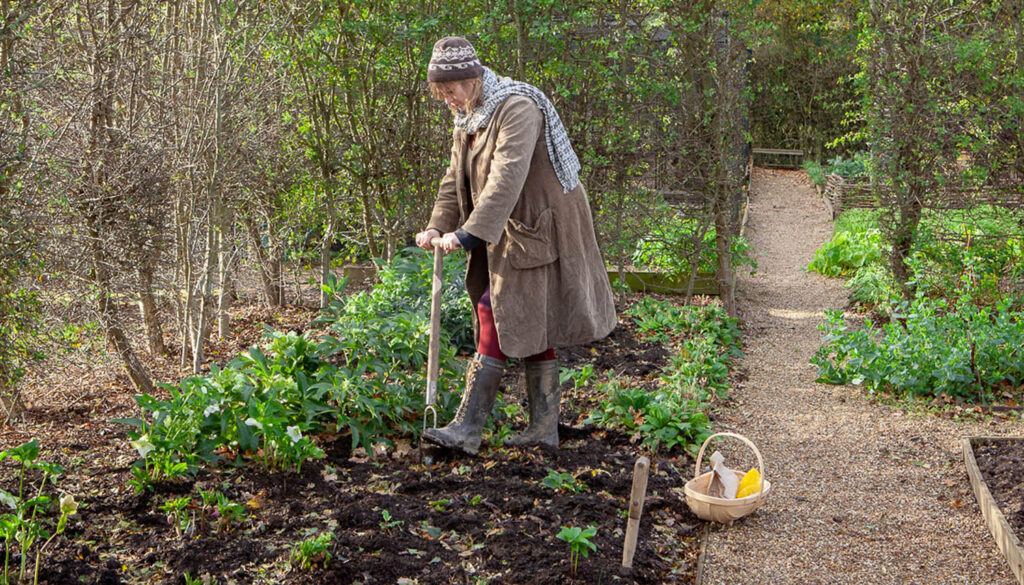HOME & GARDEN: Sarah Raven shares her essential winter gardening tips
The garden undergoes a lot of change in the winter months; colours begin to fade, and it becomes a little less productive than it was in late summer. However, there is plenty to do to prepare for next year, and still much produce to savour and enjoy throughout the cold season…
Sarah Raven offers her expert tips for gardening in the later months of the year, to ensure your garden survives through cold snaps and to give yourself the essential time off to spend time with family over Christmas.
Sowing & Growing
November is the perfect time to start sowing sweet peas for next year – be sure they spend the winter under cover.
Sort out any leftover or half-empty seed packets and throw away any that are out of date or damaged.
Clean, pack and label any saved seeds left to dry, and take the time to organise them into seed tins.
Bulbs & Tubers
There are also still bulbs and tubers (corms) to plant in the winter months. The last of your autumn bulbs such as tulips should be planted now, and don’t forget to put some in pots as well as in the garden.
By the middle of November, plant ‘Paperwhite’ narcissi ready to flower in time for Christmas. Forced bulbs should be brought to a cool windowsill when they have approximately 3cm growth.
Make sure you also check stored summer bulbs for any signs of rot or mould. Remove any affected bulbs or separate to prevent spreading.
Pruning & Tidying
Cut off most of the year’s growth from your roses, and take out any large, woody stems. To promote healthy growth of peonies for the spring, cut them back now.
In the rare instance of snow in the late months, remember to shake snow off trees and shrubs, as the weight can damage branches and stems. Snow on low plants can protect them against hard frosts however, acting as a blanket over them.
Vegetables
To allow for a good rotation of crops, start planning next year’s vegetables. It’s important to not grow the same type of crops on the same ground each year, as this can cause a build-up of pests and diseases. Move them around each year so the same group isn’t in the same area for more than one season.
Roots, brassicas, legumes can be grouped together, and everything else, such as potatoes, onions, tomatoes, can be grown together too. Some annual crops such as cucurbits (courgettes, pumpkins, squashes, marrows and cucumbers), French and runner beans, salads (endive, lettuce and chicory) and sweetcorn can be grown wherever you have space, just avoid growing them in the same place too frequently.
Wildlife & Pests
It’s important to leave food and water out for birds in the winter months, as they require more nourishment to survive the colder nights. Regularly wash and disinfect bird baths and feeders, as many birds die each year from harmful bacteria that can grow on these surfaces. Leave some berries on plants such as holly and rosehips, along with seed heads as these are great food for wildlife but make sure you save some for yourself first for Christmas decorations!
For more gardening advice, head to the refreshed Sarah Raven website, complete with brand new gardening guides and more: sarahraven.com/advice

